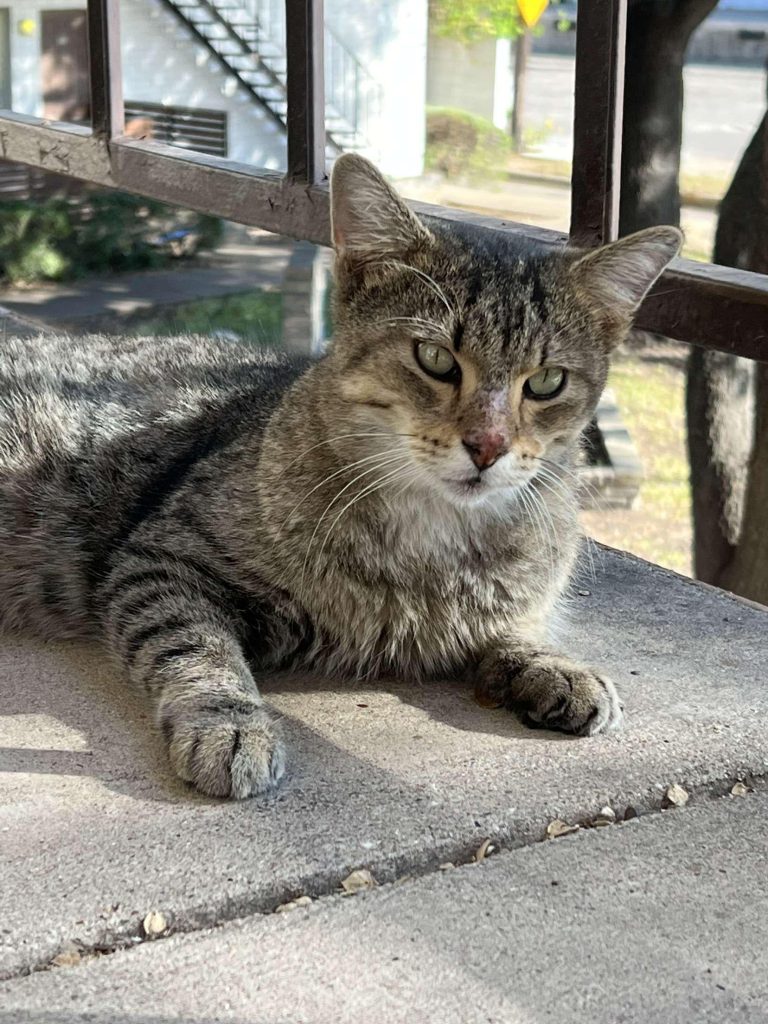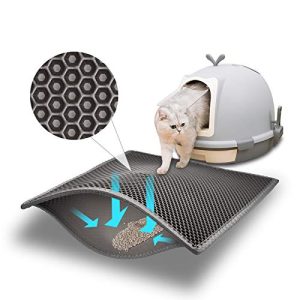Have you noticed your stray cat suddenly refusing to eat? It’s natural to worry when your furry visitor stops showing interest in food.
You might wonder if something is wrong or if there’s a way to help. Understanding why your stray cat is not eating can make all the difference in keeping them healthy and safe. Keep reading to discover common reasons behind this behavior and what you can do to make sure your cat gets the care it needs.
Common Reasons For Appetite Loss
Understanding why your stray cat isn’t eating can feel frustrating and worrying. Appetite loss can stem from several common reasons, each requiring a different approach. Identifying the cause helps you provide the right care and encourages your cat to eat again.
Health Issues
Illness is often the first cause to consider if a stray cat stops eating. Conditions like infections, dental problems, or parasites can make eating painful or uncomfortable. Have you noticed if your cat is sneezing, coughing, or seems lethargic? These signs might indicate a health problem that needs a vet’s attention.
Sometimes, cats hide pain well, so look for subtle signs like drooling or pawing at the mouth. If your stray’s appetite loss lasts more than a day or two, a check-up is essential to rule out serious issues.
Stress And Anxiety
Stress can have a big impact on a cat’s appetite. Stray cats often face unpredictable environments and threats that make them anxious. Changes in routine, loud noises, or the presence of other animals can cause your cat to lose interest in food.
I once cared for a stray who refused to eat until I created a quiet, safe corner away from foot traffic. Could your cat be feeling unsafe or overwhelmed? Offering a calm space might help reduce stress and bring back their appetite.
Environmental Changes
Moving a stray cat to a new home or shelter can disrupt their eating habits. Cats are creatures of habit and may react poorly to unfamiliar surroundings. New smells, sounds, and sights can make them hesitant to eat.
Try to keep the feeding area consistent and quiet. Adding familiar items like a blanket or toy can provide comfort. Have you observed if your cat eats better in certain spots or at specific times? Small adjustments might make a big difference.
Food Preferences
Just like people, cats have individual tastes and preferences. A stray cat might reject food simply because it doesn’t like the flavor, texture, or smell. Offering a variety of options can help you discover what your cat enjoys.
- Try wet food if the cat usually eats dry kibble.
- Warm the food slightly to enhance aroma and appeal.
- Introduce different protein sources like chicken, fish, or turkey.
Have you noticed if your cat responds better to certain foods? Paying attention to preferences can improve their appetite and overall wellbeing.

Credit: www.reddit.com
Identifying Health Problems
When a stray cat stops eating, it’s often a red flag that something may be wrong with its health. Identifying health problems early can make a big difference in how quickly your feline friend recovers. Understanding the signs of illness, injuries, and infections helps you decide when to seek professional help and how to support the cat effectively.
Signs Of Illness
Watch closely for changes in your cat’s behavior or appearance. Is your cat hiding more than usual, or acting unusually lethargic? These shifts can signal an underlying illness.
Other signs include:
- Vomiting or diarrhea
- Excessive drooling or bad breath
- Weight loss or a dull coat
Remember, even subtle symptoms like sneezing or coughing may point to serious issues. Have you noticed any of these signs around your stray?
Injuries And Pain
Stray cats often suffer from injuries that aren’t obvious at first glance. Limping, reluctance to move, or sensitivity when touched can indicate pain.
Sometimes a cat won’t eat because it hurts to swallow or move. Look for wounds, swelling, or signs of trauma, especially around the mouth, paws, or limbs.
If you spot anything suspicious, gently check for hidden injuries. Could pain be keeping your cat from eating?
Parasites And Infections
Parasites like fleas, ticks, or worms can drain a cat’s energy and appetite. Infections—whether skin-related or internal—also often cause loss of appetite.
Check for signs such as scratching, hair loss, visible parasites, or discharge from eyes and nose. Parasite infestations can lead to serious illness if untreated.
Has your stray shown any signs of parasites or infections that might explain its refusal to eat? Treating these quickly can restore appetite and health.
Behavioral Factors Affecting Eating
Behavior plays a huge role in whether a stray cat feels comfortable enough to eat. Unlike pets who rely on routine and trust, stray cats face many challenges that affect their willingness to eat. Understanding these behavioral factors helps you create an environment where your stray cat can feel safe and willing to eat.
Fear And Distrust
Stray cats often carry deep fear of humans and new environments. This fear can cause them to freeze or hide instead of eating.
Imagine a cat that has faced harsh treatment or sudden changes—it may refuse food simply because it doesn’t trust you yet. Patience is key here. Try sitting quietly nearby during feeding times without forcing interaction. Let the cat approach you on its own terms.
Territorial Behavior
Strays are territorial animals. They may avoid eating if they feel their space is threatened by other animals or even by you.
If you notice multiple strays around, feeding stations placed far apart can reduce competition and stress. Also, avoid sudden movements near their eating spot. Respect their space to encourage them to eat comfortably.
Social Dynamics
Social hierarchy influences eating habits. A more dominant cat might intimidate others, preventing them from eating.
Have you seen a shy cat waiting until the dominant one leaves before approaching food? That’s social dynamics at work. Providing multiple feeding spots and varying times can help each cat eat without pressure.
Quick Solutions To Encourage Eating
Seeing a stray cat refuse to eat can be worrying. Fortunately, there are practical ways to encourage your feline friend to start eating again. These quick solutions focus on comfort, appeal, routine, and hydration to help your stray feel safe and interested in food.
Creating A Safe Space
Stray cats often avoid eating if they feel threatened or stressed. Give your cat a quiet, cozy spot away from loud noises and heavy foot traffic. A small box with soft blankets in a corner can work wonders.
Have you noticed how your cat reacts to visitors or other pets? Reducing distractions around feeding time can make your cat feel more secure and willing to eat.
Offering Appealing Foods
Stray cats may reject unfamiliar or dry food. Try offering wet food with a strong aroma like tuna or chicken broth. Warm the food slightly to make it smell even more enticing.
You can also experiment with different textures—some cats prefer pate, while others like chunks in gravy. Watch your cat’s preference and adjust accordingly.
Regular Feeding Schedule
Establishing a consistent feeding routine helps your stray cat know when to expect food. Feed at the same times every day to build trust and reduce anxiety.
Small, frequent meals can be less intimidating than one large portion. How often do you currently offer food? Increasing meal frequency might encourage your cat to eat more comfortably.
Hydration Tips
Dehydration can make cats lose their appetite. Always provide fresh water near the feeding area, and consider adding water to wet food for extra moisture.
Some cats prefer running water, so a cat water fountain could spark their interest. Have you tried different water sources to see what your stray cat prefers?
When To Seek Veterinary Help
Knowing when to seek veterinary help is vital for a stray cat that refuses to eat. Not eating can signal serious health problems. Early action can prevent worsening conditions and save lives.
Emergency Symptoms
- Continuous vomiting or diarrhea
- Breathing difficulties or rapid breathing
- Unconsciousness or extreme weakness
- Bloody stool or vomit
- Severe dehydration or sunken eyes
- Swollen abdomen or painful reaction to touch
These signs require immediate veterinary attention. Do not delay in seeking help.
Long-term Appetite Issues
Stray cats refusing food for more than 24 hours need a vet check. Look for weight loss, lethargy, or hiding behavior.
Chronic appetite loss may indicate infections, dental problems, or internal diseases. A vet can find the root cause.
Professional Diagnosis And Treatment
Veterinarians use exams and tests to diagnose the problem. Blood work, X-rays, or ultrasounds are common tools.
Treatment varies. It may include medication, fluid therapy, or special diets. Follow the vet’s advice closely for recovery.

Credit: www.reddit.com

Credit: www.reddit.com
Frequently Asked Questions
Why Is My Stray Cat Suddenly Not Eating?
A stray cat may stop eating due to illness, stress, or injury. Changes in environment or food can also cause loss of appetite. Monitoring the cat and seeking veterinary care is important if the behavior continues.
How Long Can A Stray Cat Go Without Eating?
Stray cats can typically survive 3 to 5 days without food. However, lack of eating for more than 24-48 hours is concerning. Immediate attention is needed to avoid serious health risks.
What Are Signs Of Illness In A Stray Cat?
Signs include lethargy, vomiting, diarrhea, hiding, and refusal to eat. Physical symptoms like discharge from eyes or nose also indicate illness. Early detection helps in providing timely care.
How Can I Encourage A Stray Cat To Eat?
Offer fresh, warm, and aromatic food to attract the cat. Try wet cat food or tuna as an incentive. Provide a quiet, safe space to reduce stress during feeding.
Conclusion
A stray cat not eating can be concerning. It might be stress. Or health issues. Observing the cat closely helps. Offer fresh, appealing food. Create a calm, safe eating space. If the cat still refuses food, consult a vet. Early action prevents serious problems.
Patience and care make a difference. Ensuring a stray cat eats ensures its wellbeing. Simple measures can lead to positive changes. A small effort for a big impact. Show compassion, and the cat might start eating again. Your attention can bring comfort and health back to the cat.





